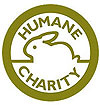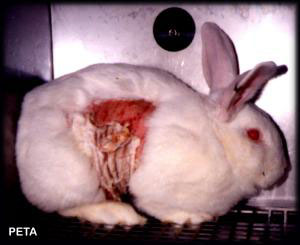| Home Page
About the animals
Reason and Logic
The Animals
Animal Links
Photos of Animals in Nature
Unique Animal Photos
Photos of Animals in Industry Environments
Influential and Famous Activists
Ways to help
Ways to help
Ways to help
Ways to help
Bookstore
Contact Information
Sign the Guest Book
|
|
|
Compassionate Alternatives
As with everything, we have a choice. A choice to do right over wrong, to choose compassion over cruelty. It takes a moment of our time to change our habits, to take an extra glance at the products we buy, the charities we donate to, the things we do in everyday life. Some cruelty free measures require a lifestyle change, but taking the first step is a journey towards a better life for the animals, better health and lifestyle for ourselves and a better world for us all. "The journey of a thousand miles begins with a single step." -Lao Tzu
|
|
|
|
Compassion starts here...
Living cruelty-free is a journey. You can start by switching to cruelty-free alternatives. Try not to think of these changes as a loss, or as "elimination" of things you enjoy, there are so many alternatives that are both comparable but have the added bonus of cruelty-free manufacturing. With the growth of ethical companies free of animal testing and animal ingredients, there are unlimited possibilities that make it easy to get what you want without causing the suffering of animals. It's as easy as carrying around a guide to cruelty free products, charities that don't test on animals and animal ingredients guides. It's as simple as reaching into your pocket and choosing the kinder alternative on the shelf. How long can we blind our conscience to the fact that many of our wants and desires come at the price of another's life? Imagine what kind of people we could be if we chose compassion over cruelty. What kind of person do you want to be? Soaps, lotions, haircare, cosmetics, toiletries, candles, first aid, and household cleaning products can contain animal ingredients, and many of the companies that manufacture them still use cruel and unnecessary methods of animal testing. Find out more about what we shouldn't ignore. To start changing things by knowing what charities to choose, what ingredients to watch out for and where to shop for cruelty-free alternatives, read on.
|
|
Research & Product Testing
Animals are used and abused and disposed when their bodies no longer serve science. From makeup and toiletries to cleaning products and household products, animals suffer terribly for the wants and needs of many. The sad and horrible truth is that most animal tests uncover just as much, had the animals not been used and caused to suffer. Needless and useless animal tests continue despite alternative test methods that are available, and even more cost effective for those using them. Here are some tests that could replace cruel and unnecessary animal testing:Skin Corrosion tests are used by restraining helpless animals like rabbits, shaving the fur off their skin and applying chemicals to their bare skin in an attempt to determine whether the chemical is corrosive or not. A chemical is considered corrosive when it eats through the skin, burning away several layers of skin tissue. Not only is this really being done, but it is all done without providing the animals with anesthetics or painkillers. The alternative to this cruel test is to use human skin tests known as EpiDerm and EpiSkin. These procedures involve using artificially grown skin cultures designed to function like skin and testing the same chemicals on these cultures. No animals are harmed, and the same results can be obtained. Skin Irritation tests are similar to Skin Corrosion tests but is done in an attempt to determine whether skin damage can be reversed. Its alternative test, accepted and used in Canada, uses a skin patch on a human volunteer since it is relatively non-invasive and is directly related to people. After a chemical is deemed non-corrosive and not harmful they can be tested using the human skin-patch test. Pyrogenicity tests are used to determine whether a new drug has fever and inflammation-causing substances which contaminate that drug. In order to perform this test, rabbits are restrained in full body restraints as with the Skin Corrosion test, and injected with the test substance. The substance enters their bloodstream and rabbits are monitored for changes in body temperature. This procedure can be very harmful and painful to the animals causing breathing difficulties, fever, circulatory and organ failure and fatal shock. This can be avoided by using what German Scientists have developed and called the in vitro pyrogen test. This alternative method uses blood which has been donated by healthy human volunteers and can completely replace the inhumane use of rabbits in pyrogenicity testing. This method is also more sensitive and more cost effective than pyrogenicity tests. Phototoxicity tests use mice and guinea pigs to examine the results of chemicals that are applied to their skin. While in restraints, the animals have their fur shaved off their backs in spots where different concentrations of test chemicals are applied. They are exposed to UV radiation for several hours before having the chemical removed and the skin examined. This procedure often causes sores and swelling of the skin. Its alternative called the 3T3 NRU Phototoxicity test uses cells to test these chemicals in the same situations. Using a red dye, testers can measure the degree to which the cells are able to absorb this dye making it possible for them to determine reliably a measure of the toxicity of the chemical being tested. Skin Absorption tests require shaving the backs of rats and smearing chemicals on them. The chemicals are left on the skin for up to 24 hours after which time the skin is washed and the animals are put into a metabolism cage where a collection is made of their urine and feces to be analyzed. After this test, the animals are killed and their skin and blood is then analyzed. The alternative to this cruel test is an internationally accepted non-animal test. This test uses real or artificially grown skin to measure the passage of a test chemical into and across skin to a fluid reservoir. Over time, the receptor fluid and treated skin is analyzed yielding a measure of chemical absorption. All of these non-animal tests have been scientifically validated and could and should replace cruel animal tests. Europe is far ahead of the US in reducing animal suffering, but the US government has not made this a priority to date. Help stop animal testing and support the use of non animal tests by contacting the Environmental Protection agency, the Consumer Product Safety Commission and the Food and Drug Administration. For more information visit: Stop Animal Tests
Health Charities
Yes, your local charity may be a culprit to this unforgivable cruelty too. Many charities claim that they feel these measures are necessary, but for each charity that tests, there is one for the same cause that does not, so their claims are unfounded. To obtain a list of charities whose goal to end suffering is all encompassing, Check out: 
Stop March Of Dimes Cruel Animal Tests To find out which animal ingredients to watch out for check out: Animal Ingredients A to Z To start shopping for cruelty-free alternatives click the links below: Pangea Vegan Products For a Cruelty Free Lifestyle Different Daisy-Vegan products from cruelty-free manufacturers
|
 They may be small, but they feel tremendous pain
Rabbits are used to test chemicals on their skin yielding painful and horrific damage like this
They may be small, but they feel tremendous pain
Rabbits are used to test chemicals on their skin yielding painful and horrific damage like this |
Yes, even your best friend
Not only are small animals used abused and thrown away when they no longer serve a purpose, but take a closer look at the friends many of us know, love and live with. |
|
|



